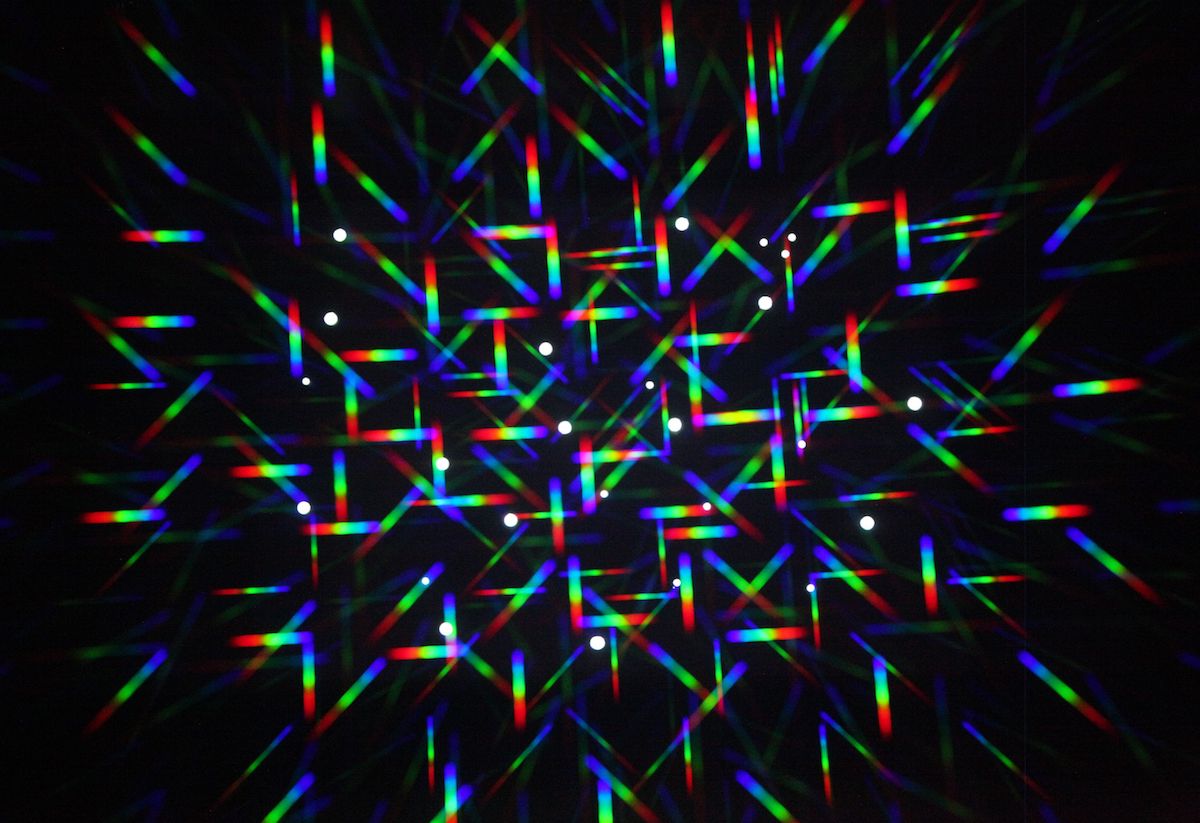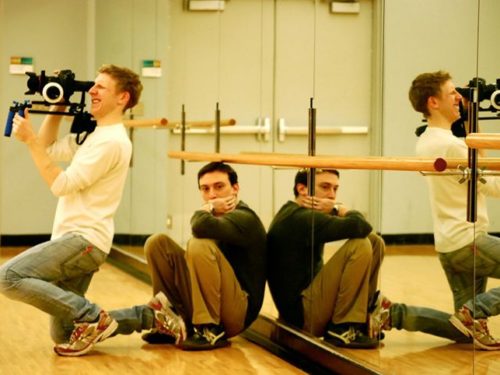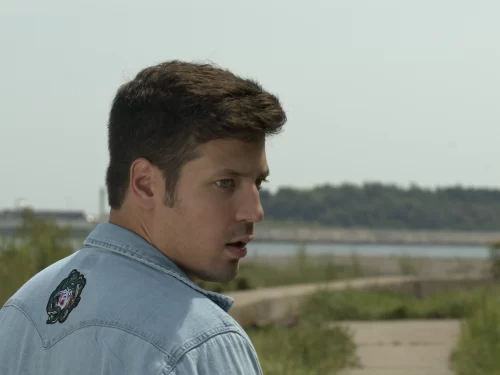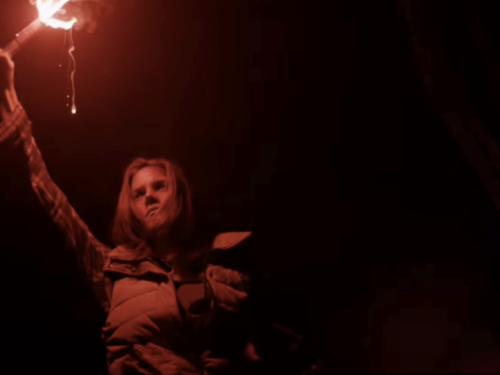The experimental animator discusses the past and future of abstract art and how to bring life to discarded objects through film
Jodie Mack creates films that are often blinding in their vibrancy. Mack’s practice illuminates the beauty of the world around her through a variety of materials: the reflective surfaces of gift wrap create a psychedelic light show (Glistening Thrills, 2013); light bleeding through multi-colored paper can compliment the timbre of soft-toned singers (The Future is Bright, 2011). Her 2018 project The Grand Bizarre was shot all over the world and explores the globalization of artistic traditions through the migrations of graphic design. Mack, who also teaches animation history and production at Dartmouth College, investigates the foundations of her genre and the often troubling history of cultural appropriation in modern art.
No matter what material she is working with, she finds ways of following her passions. Whether utilizing plants from her own beloved garden (Wasteland No 2: Hardy Hearty, 2019), archiving a vast mineral collection through time lapse (Hoarders Without Borders, 2018), or creating an animated musical with rock posters from her mother’s business (Dusty Stacks of Mom, 2013), there is always a personal element to the life she illuminates in these objects — a rich, emotional quality that is often absent in similarly formal or abstract animation and filmmaking.
We spoke with Jodie Mack about the legacy of experimental film and music, the similarities between abstract animation and a sunset, and how any material can be turned into a film.
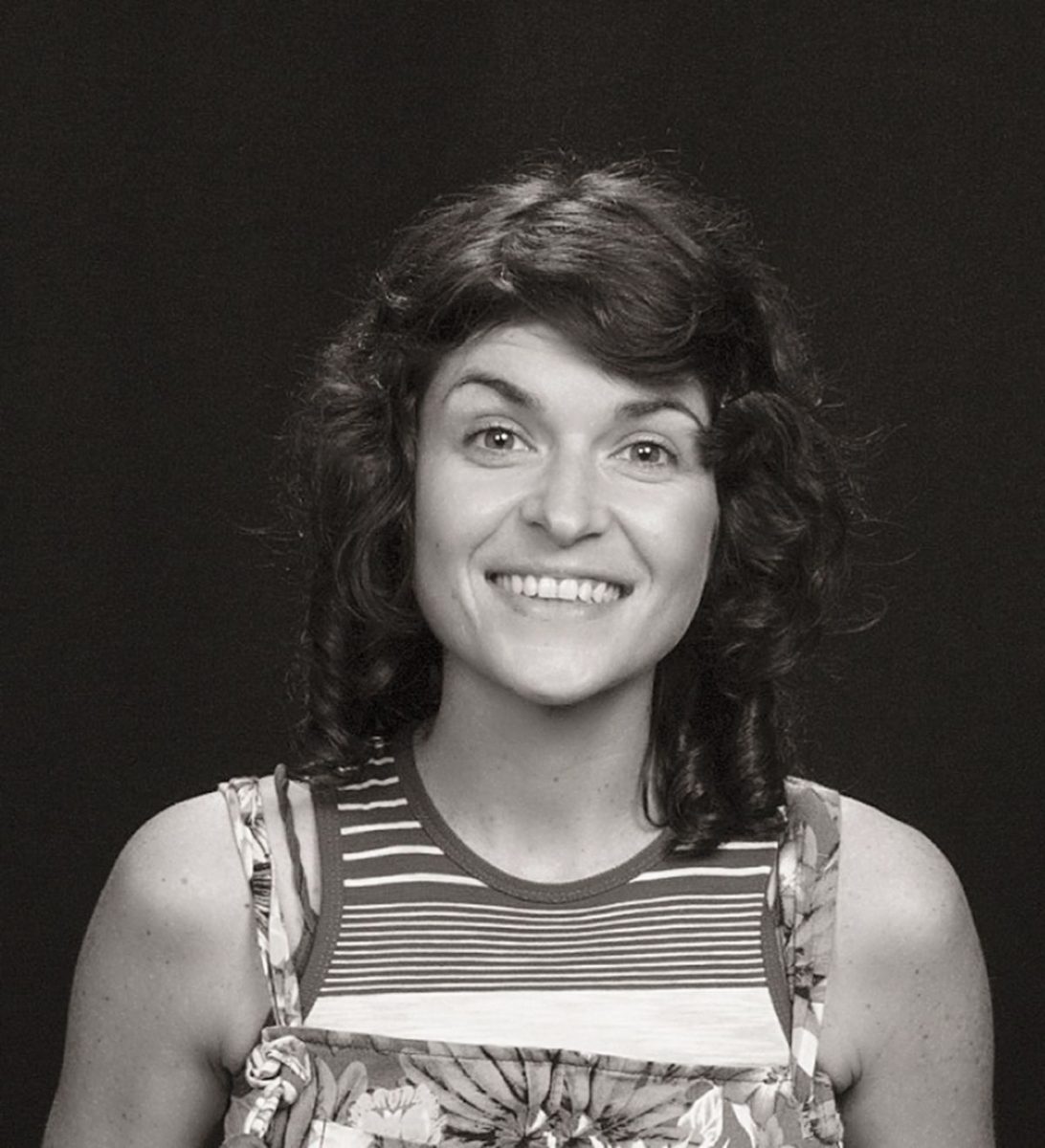
Split Tooth Media: Throughout your career, you have made films out of stained glass, fabric, ice, circuit boards, and old rock posters. Many artists see their work in terms of creation, but you have described your films as ‘eulogies’ for these materials. When did you start developing this idea to present not just the life, but also the death of these objects?
Jodie Mack: At the base level, as far as materials are concerned, you mentioned stained glass. In my film A Joy (2005) I use this contact paper that was on a window, and it was chiseled off this window like somebody was renovating and they wanted this stuff gone. And so it was all of these little pieces that should really have just gone in the trash. Everything was brittle. But there had been this person in this house, Aunt Dot, and I was like, ‘Oh my gosh this is Aunt Dot’s contact paper!’ She sought privacy and shelter with this contact paper all these years before she passed away and this renovation started. Every material really carries a story with it.
I think a lot about the idea of resuscitation when thinking about materials that are discarded, having worked with magazines or envelopes and things like that. That’s something that surfaced very early in my practice and still even surfaces today. I’m working a lot with plants now and the cycles of them, and their roots, and their dead leaves. And when you garden, you realize that everything is useful, but when you already made collage animations you knew that already because it’s a really fast track to hoarding! When you are able to see the potential for all of those objects it’s kind of a double-edged sword. Definitely every object has a life to be invigorated or a previous function to be celebrated or eulogized. That’s something that really keeps filmmaking interesting for me as I move forward working with different materials.
Your films are so rich with varied texture and color. What led you to start using everyday materials to create such lively works, and how does abstraction in particular bring out the beauty of everyday objects?
For me in the sort of lineage of things, it was really all about access and availability of materials. Some of the first things I made were with pieces of colored acetate purchased at an office supply store. The sheets took me through years of filmmaking because I was working so small, and always from the very beginning I have treated filmmaking and animation with a sense of economy. Because you never want to do anything twice if you don’t have to. Some of the beauty of cutting into things is that you will reveal other shapes that you then become inspired to use. I started out with accessible materials and really sourced and extracted as much as I could out of my own home, then moved towards ideas of institutional collections in later works like The Grand Bizarre (2018) or Hoarders Without Borders (2018), something that’s from a mineralogical and geological museum. So it sort of changed, but it’s definitely always like, ‘What is around me?’
For example, I might be fixing up my kitchen soon. I don’t really design things from scratch. Let’s go buy some old cabinets and figure out how they go together. It’s always, ‘What do we have, and how do we put it together?’
Related: Chris Sullivan: The Split Tooth Interview
What was the transition like from being focused wholly on film studies, to diving into a production program at the School of the Art Institute of Chicago?
Well, it was winding. I started out doing a lot of theater in high school and then went to a community college and studied English and thought I would continue my English degree at the University of Florida. I thought that I might be a writer or an art historian. Then I reconnected with a former part of myself in beginning to make films. It was very funny because I sort of veered away from theater because everyone was like, ‘Oh, it is going to be really difficult, etc,’ and then I ended up in experimental animation! Even more obscure and ridiculous in some ways. But even now, still teaching at the university level, I think that a lot of the ideas and ways to study and think about film can really aid us as filmmakers. Just in the same way that looking at paintings or listening to sound recordings can make us better filmmakers.
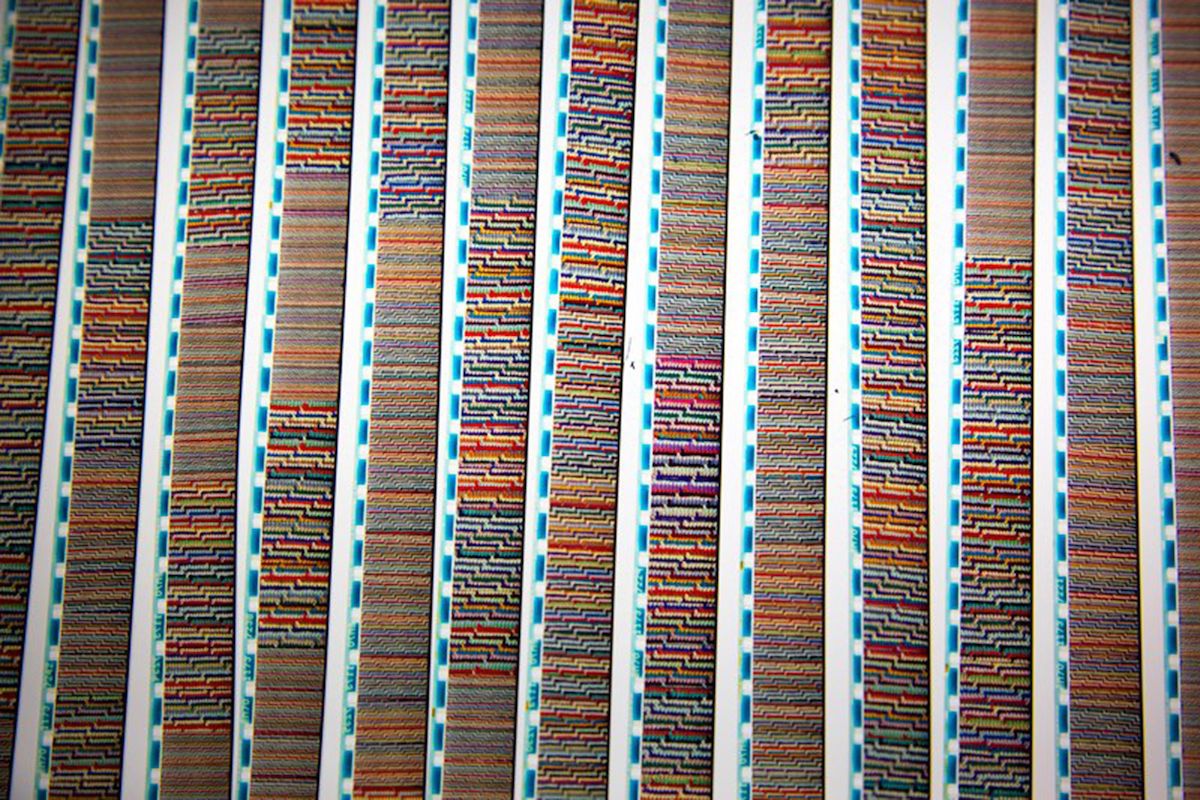
Do you see a connection between live performance and your background in theater, and the kineticism of your films?
I think there’s a relationship, of course, governed by the trajectory of literature to theater to filmmaking, and of course it carries all those burdens. But there is something about trying to represent a sense of energy or simultaneity that could be likened to that of a theatrical performance, which is highly reliant on the exchange of human energies within a space. From the very beginning animation does have this relationship to theater or to performance when you consider something like Gertie the Dinosaur (1914). I definitely see that relationship loud and clear, and I think that does echo back in some of my work.
And going off of Winsor McCay, you’ve mentioned filmmakers like Norman McLaren, Len Lye, and Oskar Fischinger as influences. What drew you to these experimenters of early cinema?
Mostly it was finding this book, Experimental Animation (1976), written by Cecile Starr and Robert Russett. I just by chance happened to find it in a library after seeing maybe one film by Len Lye. I looked through this book and was like, ‘Oh wow, what is this obscure niche?’ and really became excited about cameraless filmmaking. I loved making paintings and collages that would end up being movies and loved that these people had experimented with that as well in the past. I found my niche, within a niche, within a niche!
As an educator yourself, how do you approach introducing the craft of abstract animation to students?
Introducing [abstract animation] to students is always a fun experiment. Within an animation class, people come in with a variety of goals and pre-expectations for what animation is. You might have some real resistors in the room. There are many differences between what we might consider character animation and experimental animation. But I definitely think it’s important to not draw a line in the sand. When you’re teaching students who might only have experience with narrative animation, a really powerful way to introduce abstraction is to think about how abstract animation functions within narrative animation. The roots of a lot of character animation, when you think about the early sound synchronization in Disney cartoons, are the same concerns of what we know now as visual music, all the way down to the algorithms that are written for such things now.
I know you are particularly interested in geometric versus amorphous abstraction. Do you find people respond differently to these methods, and are you drawn to one style over the other in your work?
Something I do notice when thinking about geometric abstraction versus amorphous abstraction is this whole space for codification upon the audience’s shoulders. When you’re dealing with a square, you could be dealing with a screen or a house or a box, or all these other connotations that are associated with square, or triangle, or circle. So because of a lot of geometric abstraction’s placement within contemporary graphic design, and interior decorating, home design, the way these things have trickled down, I feel like viewers are often less inclined to place an emotional reading upon these images. Whereas it’s not uncommon to go to a museum and see someone looking at a splatter painting thinking, ‘Wow, this is the psyche,’ [they are] less likely to attach the texture to something like out of the ocean or dirt or something like that. So within the non-representational realm, the absence of shape, I think, does allow for more emotional or cosmic narrative projections essentially onto the form.
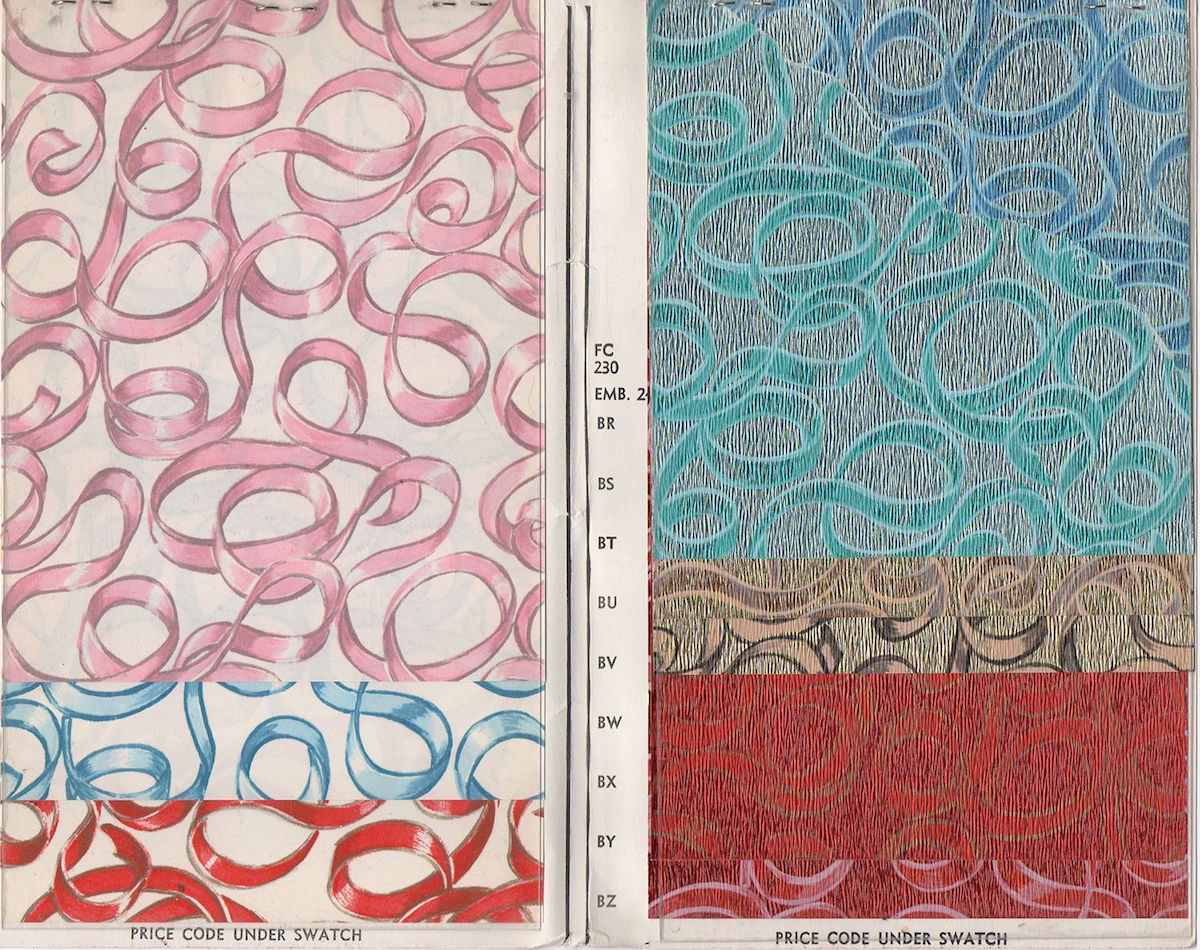
One of the common complaints I hear when speaking with people about abstract animation is that these films lack purpose or meaning. How do you, as a filmmaker and an educator, respond to this view?
I think it’s a very complex entity. In some ways I feel like viewing experimental film has a closer relationship to reading than watching narrative film. In reading you have the ability to make your own world based on words, as opposed to just consuming a bunch of words and seeing the world that someone else made up.
Other ways I’ve used to describe these things to laypeople or my family or something, is that it’s a type of cinema that’s more associated with dance or painting than storytelling, although dance and painting both feel the burden of storytelling, also. I think the same people who don’t like abstract animation probably don’t like experimental dance or abstract painting. I am definitely a proponent of the experience, and again, this transmission of energy, or the idea of spectacle.
Another argument I have in my tool kit for this type of thing is, again, back to nature — how an audience has no problem sitting at the beach watching a sunset for ten minutes, or a firework show, or something like that. We will deal with a lot of awesomeness from nature as a proscenium-based thing that we consume in groups. [Abstract animation] is not much different from that.
Related: Janie Geiser: The Split Tooth Interview
In films like The Future is Bright (2011), the way you illuminate your materials is so central to the presentation. Can the ways in which your objects are lit transform them just as much as the extreme close ups or rhythmic editing?
Earlier you mentioned the idea of stained glass; Len Lye has this beautiful way of describing abstract films as ‘stained glass daydreams.’ And the idea of that is something that fuels my art and teaching practices in some ways.
The funny story about [The Future Is Bright] is that it was made and then remade. The first version was the first thing I’d ever shot with a film camera. The light box had been central to my practice up until that point because I had been working cameralessly, and you need to work on the light box to do your animation. So this idea of light coming through was really beautiful and also paralleled the idea of the film strip militating the light of the projector. I have been talking a lot lately about this lecture I saw by Jerome Hiler, who made a connection between medieval churches that had one source of illumination in the very front of the room and the first films, arguing that the trees blowing behind this glass were the first films. I like that interpretation! Of course the idea of the stained glass window and the church, there are all these echoes in that arrangement of proscenium to consume in the group audience. This idea of something being backlit is really central.
A lot of my films incorporate very flat lighting. Very simply shot on the animation stand. But when I started working in different spaces, that really complicated itself. [For Dusty Stacks of Mom: The Poster Project (2013)] I took a light kit to my mom’s poster factory and started lighting things, attempting different ideas of concert lighting, or special effects lighting. And of course I started moving outside to shoot where the light becomes part of the animation as well and is moving along whether you want it or not. Shadows are going to move when you’re doing your shot. So now light gets to play this whole other character when you move outside.
I kind of don’t know where we started with this question but I will end it with this anecdote from Saul Levine, who likes to tell this story about an assignment that he got that was to make a film about light. He said, ‘The harder thing to do would be to make a film that’s not about light.’
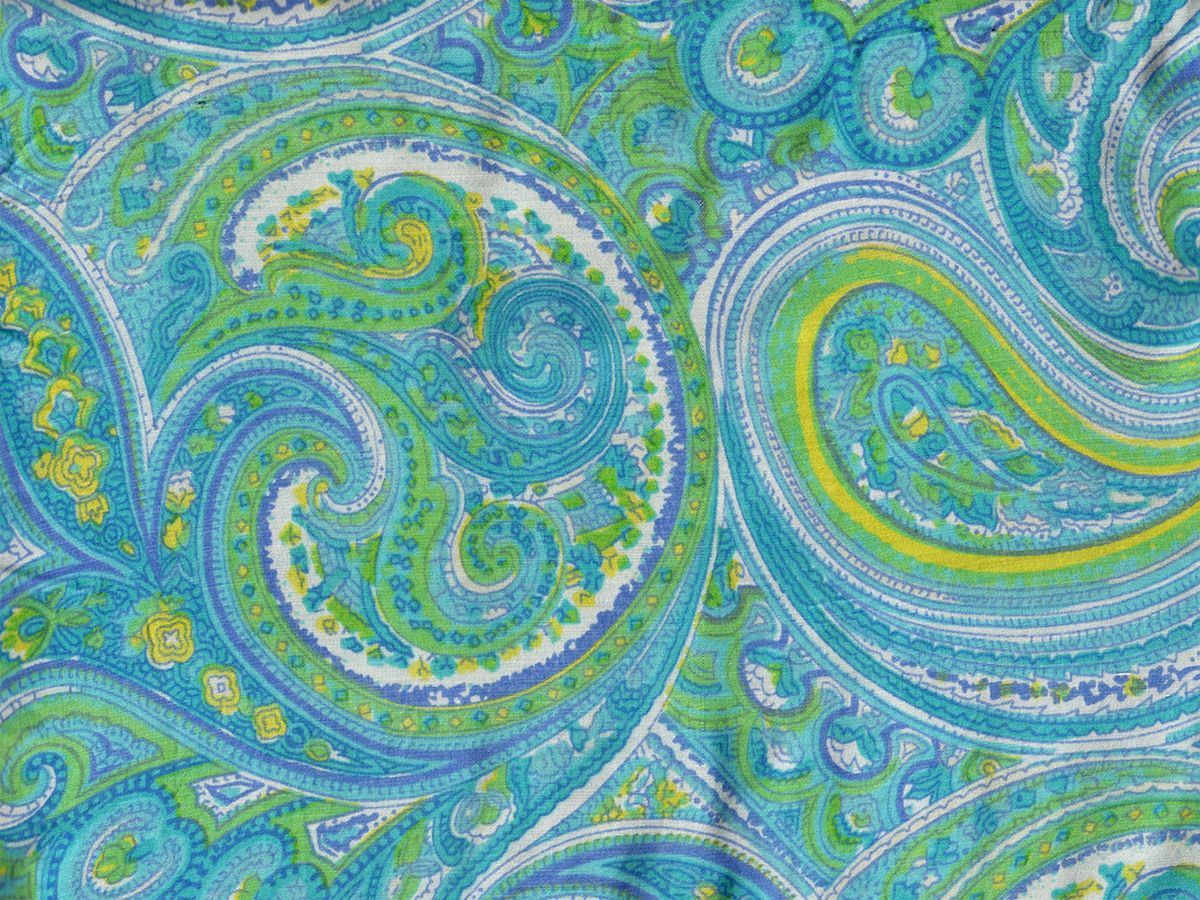
Going to the sonic side of your films, how do you choose the music that accompanies your visuals? Have there been films where the music came first and inspired your visual style?
Things have definitely moved and worked in different ways throughout my films. Some of my first films were silent. I made a few music videos. An artist reached out and I was given a song. I frankly love those projects because they are easier in some way. The sound is already done and you can sort of dream things with somebody else. They’re fun, little side projects. But then, for example, ‘Look to the Rainbow’ in The Future is Bright has a big personal connection to me. It was one of the last songs I worked on with my voice teacher in high school. I always thought it was so beautiful and has such a beautiful message. I’ve composed music and then made films to go along with the music, like for Yard Work is Hard Work (2008). I’ve cited other albums and remade albums entirely to their original tempo and used the original albums as the placeholders.
And there have been some times that music has inspired making a film. For example, my film Glistening Thrills (2013) has a score by Elliot Cole that’s for bowed vibraphone. When I shoot animation I get very little bits back. Then when I shoot live action it all goes so fast and I get all these takes and have way more than I really need. I was on my way there and I heard his piece performed live. I was right next to the vibraphone and it was so beautiful that I just wrote him out of the blue and said, ‘Hey listen, I’m not really one to make films for a piece of music. It’s not really my style altogether but I just need to make this with you. What do you think?’ So yeah, there have been films that have been inspired by musical choices.
I find that in your silent films, especially Wasteland No 1: Ardent Verdant (2017), the silence has a rhythm too, just like the songs in your films. Do you think about that when you are making a silent film versus a sound film?
Absolutely. I think one of the things that’s so difficult about working with sound is that it’s really overpowering and emotionally manipulative. It’s really hard to use music without seeming like you are dancing to it or not cutting to the beat. I think that it’s really exciting when you can have a soundtrack and an animation that have their own separate metabolisms going on that are maybe in counterpoint. When they can exist on top of one another yet not be this sort of Mickey Mouse-type synchronization. But I agree and I think I agree with opinions by people like Brakhage in some way where there is a beauty to the silent film. You’re not really going to absorb the intricacies of the animation without it being silent in some ways because it [has sound] getting in its way.
As you have said in a past interview, how do you want to go beyond visual music of the past?
Well, this is big. So the whole history of abstraction in painting or animation should now be revealed to all of us as extremely creepy, extremely white. It’s white people putting names on things, historicizing them, building rhetoric around crafts, essentially. How do we ascertain different values to an Anni Albers textile or a textile that is made in a village and sold to a tourist, or something that shows up in an airport in a duty free store? They might look kind of similar but one is valued way higher. It’s similar in music in some ways. When I first learned about experimental percussion, who did people teach me about: Philip Glass, Terry Riley, Steve Reich. A lot of this stuff is African polyrhythms repackaged as high art concert faire. Then of course all of these things have been brought into the computational realm. Geometric painting was not a development of contemporary painting. In many ways it is craft-based imagery, which was something that I thought a lot about when making my film The Grand Bizarre, which is about textiles and how patterns can travel through them.
I think that there is a lack of self-awareness about what abstraction actually is as a high art form. I think a lot of the historical work is un self-reflexive. I think a lot of it is also in the enforcement of a pure cinema or this idea that it has no meaning or that it’s sterile. There’s something about the discipline and subscribing to only being decorative that, by the time I had found it, it had been eaten and spit back out by the mainstream already. By the time I found abstract animation there was already the iTunes music visualizer. People had created these algorithms. I used to make a joke that I wanted to write a feature film about some of the earliest visual music practitioners, who sat there timing out Beethoven by hand to make films, come back to life and see what is possible with today’s technology and see the sterility of it.
I think that something around the idea of just focusing on the sensory experience misses an opportunity to also have an emotional or intellectual experience. That’s been something I really tried. Wondering, ‘Could I use these movement techniques or flicker techniques without actual materials that carry weight of meaning?’ To be able to fuse these two concerns in some ways.
The heyday of experimental animation, which Cecile and Robert wrote their book about, was full of artists working with Hollywood or at places like Bell Labs or MIT — places that are getting military funding for the development of technology and doing artist residencies to soften that fact. We have all of these people that are probably considering themselves good, well-meaning, ‘for the cause’ people, working with this imagery and making templates of it in some ways because a lot of it is around geometry and math.
We were talking about how you have been using roots and plants earlier. And I have been thinking a lot lately about the dichotomy you set up between the growing plants and melting ice in Wasteland No. 2: Hardy, Hearty (2019). It feels like the plants are simultaneously being engulfed by the ice, while also worming their way around the cubes, until they seem to synthesize amid now-blooming flowers. How did the concept for this film come about?
I mentioned that I have a garden. The film is basically documenting nine months to a year in the garden. At the end of the fall I harvested all of the flowers that I could, and I froze them into ice cubes. I left them there until all the plants were dead in the winter. Then I pulled the plants out of the ground and I was shooting them under my animation stand. I had a bowl of ice and I would put that under, and I would move the bowl of ice and put the root, and then take the ice and put it back. And the ice was melting as it went along so I would be replacing cubes. And then the spring came and the new weeds started to come up in the same place that the plants were before. So then I dug all those up and continued shooting with the blooms frozen in the ice cubes, the roots of the plants themselves and the things that replaced them.
It was also somewhat of a eulogy or rumination upon death or a life cycle. Things leaving and other things replacing them. In the description of the film, I quote a passage from Bambi (1923) by Felix Salten. It is this beautiful conversation about these two leaves. Then one blows off the tree and dies. It’s in the movie as a very small transition with no words. I’m still actually working with plants from my garden on a new film, where I’ve been freezing them into larger blocks of ice. So a lot of vase-shaped things and a lot of bowl-shaped things. I actually have one just time lapsing the melting of them as we speak right now.
I am really obsessed with my garden and I am a big cook and I’m a big user of the garden. It’s one of those places where there’s all this available material. Everything has animation potential. If you cut every leaf off a plant it’s going to animate. All the flowers are going to animate. And of course I’ve been interested in the relationship between the natural and the fabricated or the synthetic for so long. Especially when thinking about the idea of a render farm, or the way that we base technology around natural systems in some ways.
I’d love to hear more about the making of Glistening Thrills. Especially in regards to the tone of that film and the tricolor effect you captured when light bounces off those reflective materials.
In that film I worked with holographic gift bags and wrapping paper that I got at a dollar store somewhere. I got help from my friends making a mobile out of the gift wrap, and just started hiking and taking my stuff and shooting it around the forest as a way to make these magic moments happen.
When I first heard Elliot’s piece, it was performed in this old Shaker church and it really was somewhat of a religious experience. I think the question of what is and what isn’t a religious experience is really interesting, especially when you think about collectivity versus individuality. Is it only religious if it’s epic or on a grandiose scale and you’re experiencing it collectively watching this stained glass window move? Or can you have an experience individually?
[Glistening Thrills] is very somber. It is in some ways a eulogy for my mom’s business that went out of business. The film is in this five-part series where there’s a film about my mom’s business and this kind of funeral film. It is a moment to reflect upon the loss of this business in an individual way.How did you develop the idea in Hoarders Without Borders to use time lapse to present, or even archive, this beautiful mineral collection?
I’ve always loved rocks and minerals. But the thing that took me towards that film was making The Grand Bizarre. Which was again, on the surface, about textiles. But then it was also about music and language and globalization and a lot of the things that we’ve been talking about as far as reflexive appropriation and the idea of knowledge. So within The Grand Bizarre I chose not to cite any of the books I read and treat it like an experience that the viewer was having and presented no information. I only presented experiences. Again, because through approaching a lot of these books about textiles, it was obvious to me that writing about textiles really is a studies industry of education, white thing to do. There’s a lot of white names on all of those books. It’s not to discount people’s research; it’s to discount the structure. I had met weavers who told me that academics had come to write books about them, and then messed things up — not asked for fact checking, not provided a copy of the book, etc.
Within that film it’s the closest I’ve ever come to approaching any ideas of ethnography. And within the ethnographic film I feel that we border on again this idea of the catalog. This idea of specimen and representation of the Other, representation of another entity into a digestible piece of knowledge that we can then use basically as knowledge capital within this educational industry.
The [Harvard Mineralogical and Geological Museum] just happened to be inventorying a donation and I thought it would be a really cool idea to create an animated archive in the order it was organized. Usually when I work with a group of materials I have choice and can take liberties in rearranging them, reordering them, repeating them. But I wanted to create a really objective, ordered portrait of this actual collection that could also serve as an archive in some ways because the archive itself wasn’t able to photograph the collection the way they wanted to. So there was this fun idea of a temporal archive and thinking about the idea of a film roll as a data storage mechanism. Hopefully I will make another Hoarders Without Borders at some point.
How has your approach to filmmaking changed over the years?
I used to work with a lot of flat lighting. I started out working cameralessly, so very small on my fingernail. A good friend of mine, Elena Duque, pointed out to me a few years ago, ‘Your films are getting bigger in space. You’re getting more into the three dimensional.’ This was after Dusty Stacks of Mom and Glistening Thrills, which were both in 3D space, no longer shot on an animation camera. My next big project was shot all over the world in real space, for the most part outside in the sun, sweating, sneakers, changing light and all. I feel like I expanded and expanded and expanded my scope of looking outward. Maybe now, especially related to the quarantine and the pandemic and the garden, I feel like I’m becoming a little bit more introspective. I might like to do something a little bit quieter or about the idea of staying still in some ways. There’s something weird about flicker animation where it doesn’t actually move anything sequentially. It’s this moving energy instead. So I’m thinking a lot more about the idea of animation as a representation mechanism for the idea of stasis, as opposed to motion. It moves, but it doesn’t.
My filmmaking, in some ways, hasn’t changed at all. I always joke with myself that all I can do is make things spin around! (Laughs) Here I am spinning something around again 12 years later! But I think that things have developed in scope and wavered with scope. I’ve gone really big and far out, and projects have moved from taking a couple of days to as much as five years. I definitely think I’ve raked along with me more and more concerns related to the documentary tradition. I am so interested in animation’s relationship to documentary because animation is incompatible with cinéma vérité. Everything needs to be constructed. There is no way to just let the camera unfold. The way that animation functions within documentaries really can tell us a lot about signifiers of knowledge and truth in the way that documentary functions, with charts, and recreations, and things like that. That’s definitely swept up more and more in my work. As well as an integration of those concerns with writing musicals, essentially. I just want to be that musical-documentarian/experimental animator because that’s even smaller of a niche of a niche of a niche of a niche, so why not?
The majority of Jodie Mack’s films are streaming through the Fandor channel on Amazon Prime and on Mack’s Vimeo page
Stay up to date with all things Split Tooth Media and follow Robert on Twitter
(Split Tooth may earn a commission from purchases made through affiliate links on our site.)

